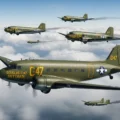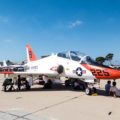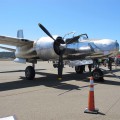The Douglas DC-3 is a fixed-wing propeller-driven airliner that revolutionized air transport in the 1930s and 1940s. Its lasting effect on the airline industry and World War II makes it one of the most significant transport aircraft ever produced. It has a cruise speed of 207 mph (333 km/h), capacity of 21 to 32 passengers or 6,000 lbs (2,700 kg) of cargo and a range of 1,500 mi (2,400 km).
The DC-3 is a twin-engine metal monoplane with a tailwheel-type landing gear and was developed as a larger, improved 14-bed sleeper version of the Douglas DC-2. It had many exceptional qualities compared to previous aircraft. It was fast, had good range and could operate from short runways. It was reliable and easy to maintain and carried passengers in greater comfort. Before the war it pioneered many air travel routes. It could cross the continental United States and made worldwide flights possible. It is considered the first airliner that could make money carrying only passengers.
Source: Douglas DC-3 on Wikipedia
More info:
The Douglas DC-3 is a propeller-driven airliner that revolutionized air transport in the 1930s and 1940s. It was fast, reliable, and economical to operate. The DC-3 was the first airliner to make money by carrying passengers alone. It also had a lasting impact on the airline industry, as it was widely used by airlines around the world for decades. The DC-3 also played a significant role in World War II, serving as a military transport aircraft under the designations C-47, C-53, R4D, and Dakota.
The DC-3 was also used for cargo, paratroop drops, glider towing, reconnaissance, and other missions. The DC-3 was one of the most successful aircraft ever built, with over 16,000 produced by various manufacturers. Many of them are still flying today in various roles, such as firefighting, sightseeing, and air shows. The DC-3 is a testament to the ingenuity and durability of aviation engineering.












